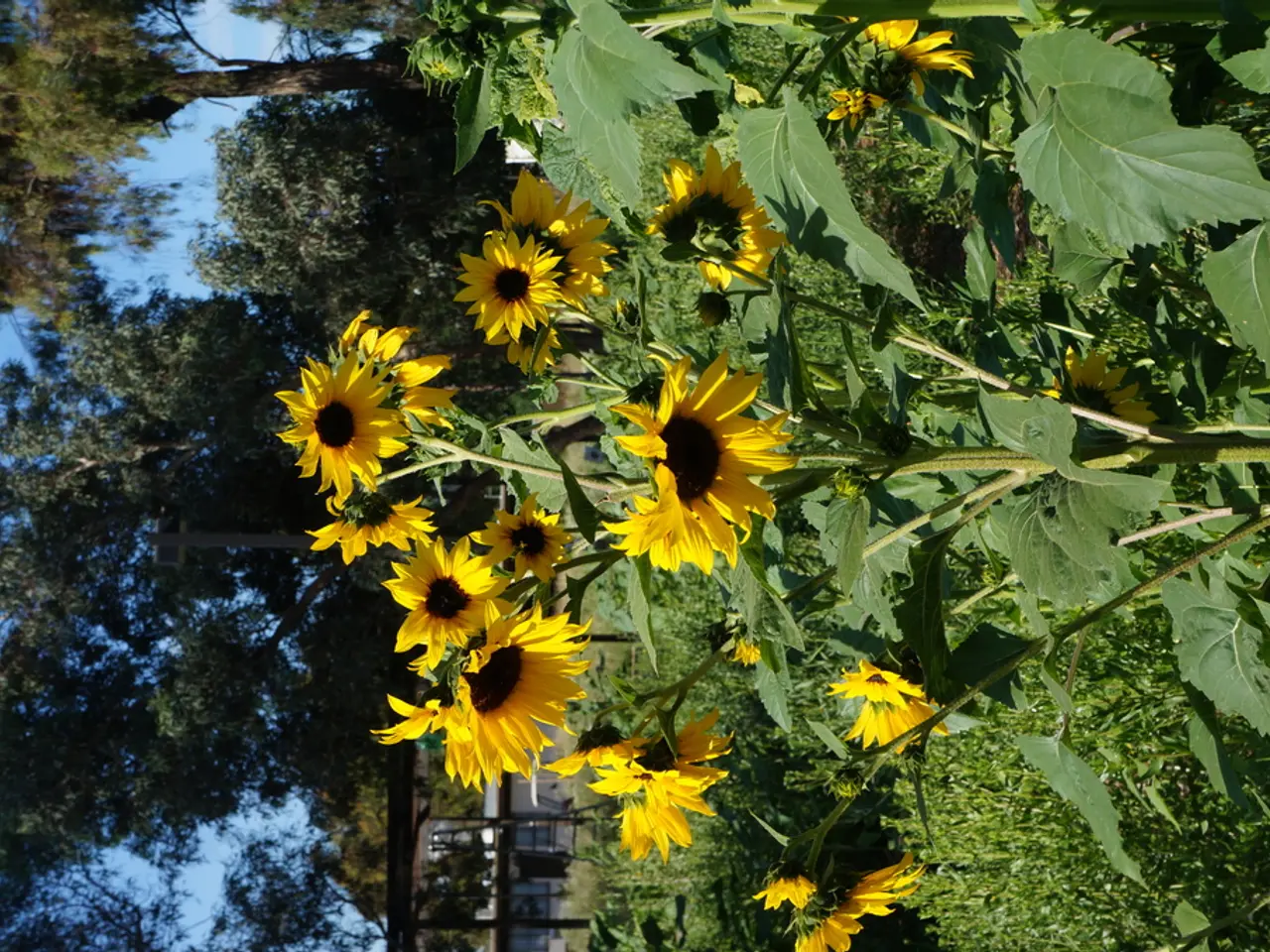"Mastering the Art of Gathering and Hoarding Wildflower Seeds"
In the spirit of nurturing nature and promoting biodiversity, here's a guide to collecting and storing wildflower seeds in a sustainable manner. This approach ensures the preservation of these important plants, enriching both natural and cultivated landscapes.
1. Collecting Seeds
The process begins with harvesting seeds from healthy, mature wildflowers. Look for plants with vigorous growth and prolific blooming during the growing season to ensure good genetic stock. Ideally, collect seeds around late summer or early autumn, when the seed heads are fully mature and have turned brown, dry out, and begin to crack open or drop their seeds naturally.
2. Drying Seeds
Once collected, spread the seeds in a single layer on trays, screens, or coffee filters and let them dry in a cool, dark, and well-ventilated place until fully dry. Seeds are dry when they snap or shatter, not bend or squish.
3. Storing Seeds
Once dry, store seeds in paper envelopes or zip-lock bags (if fully dry) that are clearly labeled with the species name, harvest date, and location. Keep them in a cool, dark, and dry place such as a drawer, closet, or dry basement to maximize longevity. For certain species (especially woody shrubs or some wildflowers like Virginia Bluebells, Phlox, Turtlehead), seeds benefit from refrigeration in sealed containers to maintain viability.
4. Seed Longevity and Use
Most wildflower seeds last 3-5 years if stored properly, but it's safest to sow the year after collection to ensure good germination. Seeds from vines and woody plants typically lose viability faster and should be used by the following spring.
5. Sustainable Sharing
Share your collected seeds with friends, family, or local seed libraries to help preserve native plant diversity and support the local environment.
6. Advanced Storage Options
For those seeking superior protection against moisture, pests, and temperature fluctuations, vacuum-sealed seed storage vaults can extend seed viability for years.
Key Storage Conditions - Dry seeds fully before storing - Store airtight if possible, especially for refrigeration - Cool, dark, and dry environments preferred - Label seeds clearly - Use or share within a few years for best success
By following these steps, you help maintain wildflower genetic diversity and foster a sustainable, thriving garden and local ecosystem. Happy seed collecting!
[1] National Wildlife Federation. (n.d.). Grow Wildflowers for Wildlife. Retrieved from https://www.nwf.org/Garden-for-Wildlife/Plant-Native/Grow-Wildflowers-for-Wildlife
[2] Missouri Botanical Garden. (n.d.). How to Collect and Store Seeds. Retrieved from https://www.missouribotanicalgarden.org/plants/how-to-grow/collecting-and-storing-seeds/
[3] The Spruce. (2021, September 21). How to Collect and Store Wildflower Seeds. Retrieved from https://www.thespruce.com/how-to-collect-and-store-wildflower-seeds-3667003
[4] The Xerces Society. (n.d.). Seed Saving for Pollinators. Retrieved from https://xerces.org/wp-content/uploads/2020/07/Seed-Saving-for-Pollinators-Handout.pdf
[5] Seed Bank Botanic Garden. (n.d.). Seed Storage. Retrieved from https://www.seedbank.org/seed-storage
1. Decor
Growing a sustainable garden filled with wildflowers not only adds beauty to your home-and-garden but also promotes biodiversity and supports pollinators, making it an aesthetically pleasing and environmentally friendly lifestyle transformation.
2. Planting
Seeds collected and stored properly can be used in the planting of native wildflowers, contributing to the enrichment of natural landscapes in your garden.
3. Soil
For successful wildflower growth, prepare your soil by ensuring it's well-draining, rich in organic matter, and free from weeds to provide the best nursery for your collected seeds.
4. Gardening
It's essential to monitor your sustainable garden, maintaining proper soil moisture, adequate sunlight, and controlling weeds to ensure that your wildflowers reach maturity and prosperity, yielding a bountiful display of flowers.
5. Harvest
Harvesting wildflowers can also be a joyful activity, with their blooms brightening your home arrangements or bringing life to your living space. Make sure, however, to leave enough flowers for pollinators to continue supporting their important role in local ecosystems.




